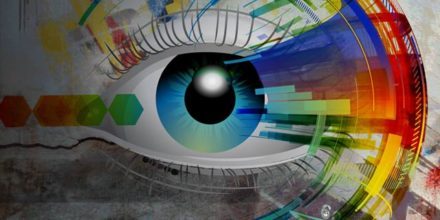Visual Search is the most composite and fiercely competed sectors of online industry. If you’ve ever gone through the disappointment of trying different ways to describe an item through text-based query search in this digital century and still couldn’t find what you were looking for, then Visual Search is the perfect option.
Visual Search helps in finding exactly what you’re looking for is as easy as taking a picture with your phone camera. Search has been an important tool from a long time for E-commerce websites that enables users to discover products among million of choices. While they offer great text and faceted search, those features can only go so far. It can be difficult to exactly describe an item in mind, especially in a way that search engines can understand. But there’s one type of search query that’s very precise, exact, and interesting – an image that user upload from the phone after user snaps something in the real world. In the last few years, visual search has begun to change the way of online search. Every day, the number of people using visual search is simultaneously increasing. At its best, Visual Search has the potential to reach and change the way of interaction with the world around us.
What is visual search?
The process of using an image as a search query to find out more information, or to find similar images. Visual search uses real images as the query for online searches by using AI technology to understand the content and context of images and give a list of relevant results. It hosts applications in the E-commerce, particularly for fashion and home decor industry in its earliest iterations. There are currently three different processes being employed by main search companies:
- Traditional search visual content that relies on textual queries.
- Structured data to determine similar characteristics by Reverse image search.
- Image searches by Pixel-by-pixel that enable “snap and search” by image or by parts of the image.
Bing visual search:
Microsoft wants users to be able to skip the keyboard and search not just with a photo, but within a specific part of that photo. Because of Artificial intelligence, that feature is now arriving in the Bing app. Visual Search uses a camera or an existing photo to search a shop for products, landmarks, or to scan a barcode and QR code. A user can select a particular object, sharpen them, and buy similar items if they desire. The opportunities for retailers are plentiful and obvious also.
Pinterest Lens:
Pinterest launched its own visual search engine lens. This tool allows users to click pictures of items and learn more about them, possibly even buy them. While Lens is far from perfect, a segment of Pinterest users searches with the tool every day. The number of daily users has doubled in the last six months on Pinterest. In combination with its establishment of a paid search product and features like ‘Shop the Look’, there is a growing agreement that Pinterest could become a real marketing competitor. Along with Amazon, it should profit from advertiser’s thirst for more options further than Google and Facebook.
Google Lens:
The aim of Google Lens is to turn every Smartphone into a visual search engine. It is also easy to use as take a picture of any object and Google will tell you information of the object, along with any related entities. Point your Smartphone at a restaurant and Google will tell you its name, whether your friends have visited it before, and highlight reviews also. This is established by Google’s unique inventory of data, both from its own knowledge graph and the consumer data it holds. All of this data can fuel and refine Google’s deep neural networks, which are essential to the successful functioning of its Lens product.
Advantages of Visual Search:
- Easier Query Search: Visual Search allows you to skip your keyboard with your camera phone by using images instead of text to search for things. For example, if you see a particular thing that you like, all you need to do is take a picture of that product and it will help you find the same thing or a similar thing from Target’s list.
- Visual Search in Retail: Visual Search is good for retail segments, such as fashion products and home decor products because they are mostly presented by visual content, and style is also difficult to describe using text search.
- Give More Relevant Results: Visual Search query provides more accurate results than text search. Products are difficult to describe by traditional text-based search, and visual search provides a very precise way to search and give more accurate results. It also helps in cases where a product’s information has been wrongly labelled.
- Discover New Products and Ideas: Visual Search helps to find similar items, it allows for the discovery of cross-category products. It also recommends similar items in different categories. For example, it might recommend a shirt with a similar style to the style of a dresser you recently browsed.
- Performance and Scale: Visual Search holds a lot of promise with few challenges. The highly relevant content needs to be shown with low latency in order to provide a good experience to user, and this needs to be done at scale.
Visual Search and Ecommerce:
E-commerce is visual. Searching for the right product on the internet is a visual experience. The more pictures and specifics a brand provides the user about a product. Visual search is a particularly great tool for customers who are looking for a particular item. This is because it reduces the number of steps the user, such as typing in a keyword or scrolling through results. Instead, the desired product is immediately brought to the customer’s attention. Visual search is a precious business tool that is changing the interaction of people with E-commerce and social media platforms. Instead of entering a text query, visual search engine enables users to identify and locate items via photos clicked with their Smartphone cameras.
Visual Search in future:
The reach of visual search is limitless. And while it has not exactly gone mainstream yet but it will. We know that technology changes faster than we can cover our heads around the last innovation. Most people don’t even know that this type of technology exists.
In future, text-based SEO won’t be the focus. It will be all about the visual content. And E-commerce is really only scratching the surface of what could be possible for visual search and some Improvements will be made for support scaling visual search services.
Impacts on SEO by Visual Search:
Visuals are already a part of the E-commerce website and search engines are frequently indexing images and videos which contribute to the website’s rankings score. The user no longer needs to remember a products name, they can simply click a picture of the product and upload it to the E-commerce website. SEO is all about improving the user’s experience. And while the website might not have the functionality of true visual search, start with alt-tag images and optimizing all the product images. The website will not only be recognized by search engines, but it will also be better for the users. There’s a lot of potential with visual search then current on-site search. There are some advantages to customers:
- Customer engagement: Customers will find the product easily, as its visual content based, which increases the attention of the customer anyway. It’s easier to look over a few products that are closer to search requirements than hundreds.
- Easier purchase process: The customer is going through a few products rather than lots of. It’s easier, simpler and quicker.
- Customer satisfaction: Browsing a website to find out the target item can be annoying and time-consuming, especially when the user already has an idea in its head of the items. Visual search just makes it so much easier. It enhances the user’s experience.
How to optimize the image for visual search?
- Add explanatory alt-text to images for indexation.
- Optimize for ideal image size and file type.
- Utilize appropriate schema markup for images.
- Submit images to an image sitemap.
- Optimize images to run on mobile and desktop displays.
- Set up badges on images and run them through a structured data test.
- Optimize image titles and alternative attributes with keywords.
Impacts on Marketing by Visual Search:
Companies which have not integrate visual search practices into their marketing strategies, they’ll soon find their competitors increasing their market share. Google has prioritized its visual search development efforts. With the ongoing advances in technology, the visual search will play an even big role in the user experience. Google’s visual search engine allows users to click a picture of a business and discover everything about it, from its website to reviews and all the social channels.
As more users adopt visual search for searching anything on the internet, it’s up to businesses to think of their content in terms of pictures, not in just keywords. The target audience wants to see images of products and services, along with a cherished look into the brand and how it operates. Storytelling is an important component of marketing any business. Now visual storytelling will take superiority, marketers must shift their focus on visuals. That means rethinking content marketing strategies, researching visual search engine algorithms, and increasing efforts to capture visual representations of brands. Graphic representations of the brand will continue to impact the bottom line as visual search technology improves and grows.
Conclusion:
Visual search will give a new revenue stream for E-commerce stores and greatly improve the user’s shopping experience. This could have a major impact on SEO and paid media, bringing back a renewed focus on visual content optimization, which has long been ignored by SEO practitioners. This new type of search will only reinforce existing strategies for SEO and make the need to optimize for mobile search and your visual web presence more prescient.




